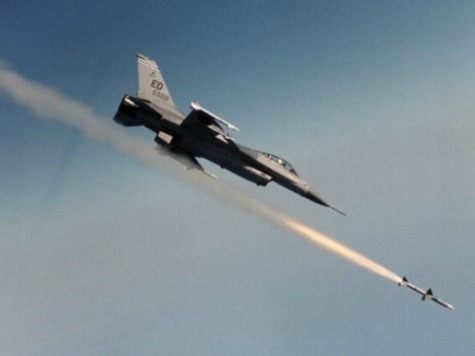While the Islamic State (ISIS/ISIL/IS) has made major inroads in the city of Ramadi and territories increasingly close to the Iraqi capital, Baghdad, Kurdish forces backed by American airstrikes have reported major progress in the north of the country, with the Iraqi government reporting that an American airstrike has killed the ISIS governor of Mosul.
According to Kurdish news outlet Rudaw, Ibrahim Younis Hamdani, appointed by Islamic State leaders to govern the second-largest city in Iraq, died Wednesday after being hit by an American airstrike. A statement from the Iraqi Defense Ministry explained that Hamdani “was killed by U.S.-led airstrikes in the Mosul neighborhood of Badoush in western Mosul. … Ibrahim Younis Hamdani was on the way to Badoush areas when the warplanes bombed his convoy.”
Rudaw notes, however, that Hamdani is only the latest in a line of Mosul governors to be killed in this manner. Nonetheless, his death causes a disruption that the Islamic State may not be able to afford, given that Kurdish Peshmerga forces are inching closer to Mosul by the day.
On Wednesday, high-level Peshmerga officials reported that their forces had attacked numerous ISIS strongholds west of Mosul, killing “dozens” of jihadists. The Peshmerga appear to be attempting to surround the city, with another attack in Ishk, Iraq, a village east of Mosul. “The Peshmerga managed to bombard two ISIS convoys near a kerosene factory in the village of Ishk on the Tigris front,” reports Kurdish Captain Dilshad Maulood on Monday, before the progress in the West.
American airstrikes appear to be leading the way for the Peshmerga, as reports note that “at least 40” jihadists were killed in towns on the outskirts of Mosul this week. Spanish news wire service EFE reports that Kurdish leaders identified three ISIS leaders–Majbal Diban Khalaf al-Luizi, Ahmed Ali al-Jubouri, and Bassem Mohamed Ali al-Fanush–as among the dead.
ISIS cemented its control of Mosul in late June 2014, nearly a year ago. In the process of reconstructing the city in its image, the group forced all Christians to leave, convert to Islam and pay an infidels’ tax (jizya), or accept death. Jihadists ensured the destruction of most of the artifacts in the Mosul Museum–a move against “idolatry.” It has not spared Muslim historical sites, most recently destroying the Bakr al-Afandi mosque, claiming it was guilty of “having shrines inside.”
Northern Iraqis who fled the city fear that a year of forced intermarriage and Islamist indoctrination will make it difficult to restore the city to its previous state even after the Islamic State is defeated. “Especially if they feel abandoned by the international community and their own government, those living under IS rule are at best neutral, and at worst supporters of IS,” Hisham al-Hashimi, an adviser to the Iraqi government, told Radio Free Europe of the city this week. He notes also that “enforced coexistence,” involving intermarriage between Sunni locals and foreign ISIS recruits, is designed to systematically alter the demographics of Mosul to create a population favorable to ISIS. The first step in that project was to expel Kurds, Christians, Yazidis, and other non-Sunni Muslim Arabs. Shakir al-Bayati, a journalist originally from Mosul, lamented that he believed ISIS is “winning over the streets.”
Some small signs have begun surfacing that Islamic State leaders fear a full assault of the city they would not be able to deter. In March, images emerged of what appeared to be the construction of “medieval-style” fences around the city, making it more difficult for people to enter or exit the city. In April, ISIS ordered all men over 15 to grow beards, a move that would make it more difficult for foreign invaders to tell civilians from jihadists, or even tell individuals from each other on a battlefield or from long distances.

COMMENTS
Please let us know if you're having issues with commenting.